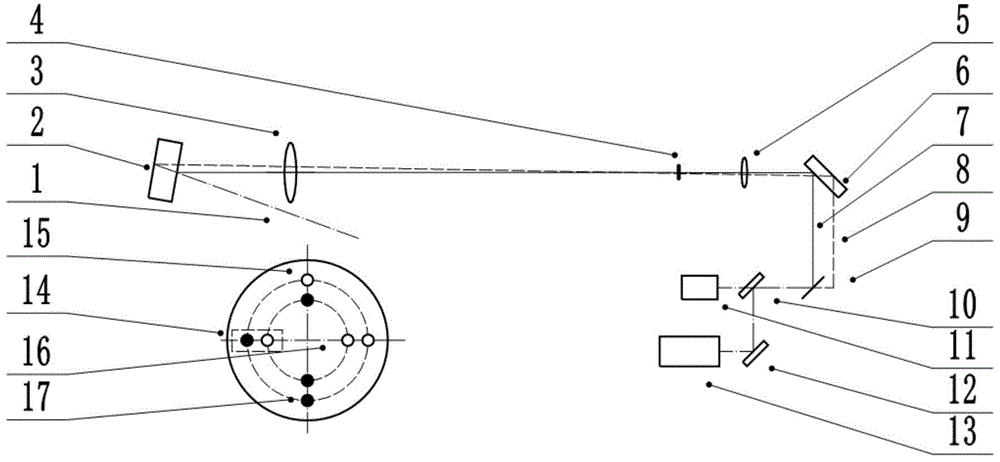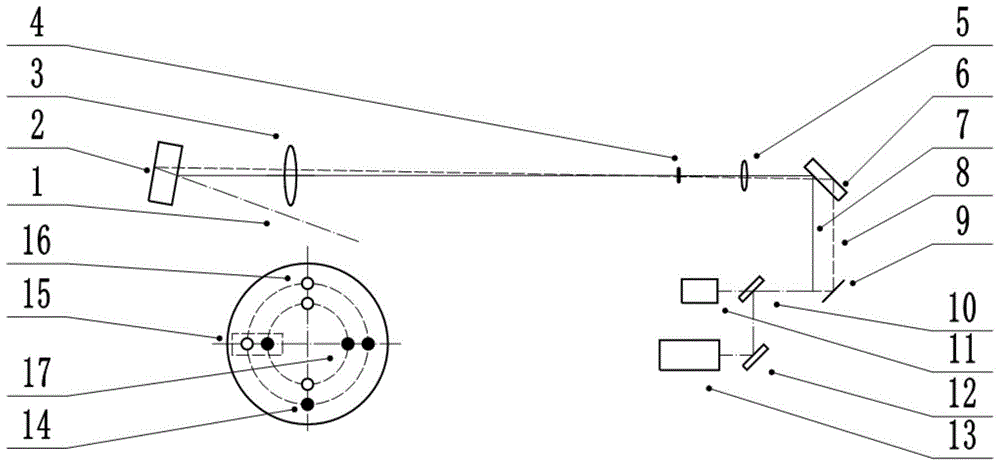Two-channel optical beam reducer with attenuation function
A dual-channel, optical technology, used in optics, optical components, instruments, etc., can solve problems such as pulse width distortion and damage to optical components
- Summary
- Abstract
- Description
- Claims
- Application Information
AI Technical Summary
Problems solved by technology
Method used
Image
Examples
Embodiment Construction
[0019] The present invention will be further described below in conjunction with the embodiments and accompanying drawings, but the protection scope of the present invention should not be limited thereby.
[0020] When the high-energy ultra-short pulse works according to the design value, the output state is: energy 1000J, pulse width 1-10ps adjustable, and the corresponding power is 10 +15 W. In the technical solution proposed by the present invention, in order to realize the parameter diagnosis of the laser pulse under this condition, the high-energy ultrashort pulse becomes the measured pulse 1 after passing through a sampling mirror. The transmittance of the sampling mirror is T=1.5%. The measured pulse 1 first enters the first beam splitter 2 , and then enters the dual-channel second beam splitter 6 through the first lens 3 , the gate aperture plate 4 , and the second lens 5 . After the measured pulse 1 leaves the second spectroscope 6, two diagnostic pulses are output ...
PUM
 Login to View More
Login to View More Abstract
Description
Claims
Application Information
 Login to View More
Login to View More - R&D
- Intellectual Property
- Life Sciences
- Materials
- Tech Scout
- Unparalleled Data Quality
- Higher Quality Content
- 60% Fewer Hallucinations
Browse by: Latest US Patents, China's latest patents, Technical Efficacy Thesaurus, Application Domain, Technology Topic, Popular Technical Reports.
© 2025 PatSnap. All rights reserved.Legal|Privacy policy|Modern Slavery Act Transparency Statement|Sitemap|About US| Contact US: help@patsnap.com



